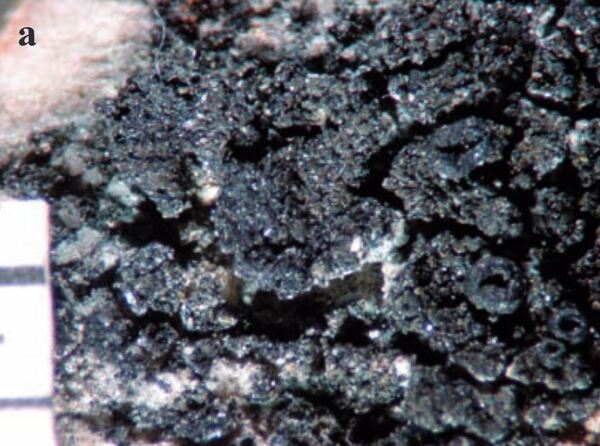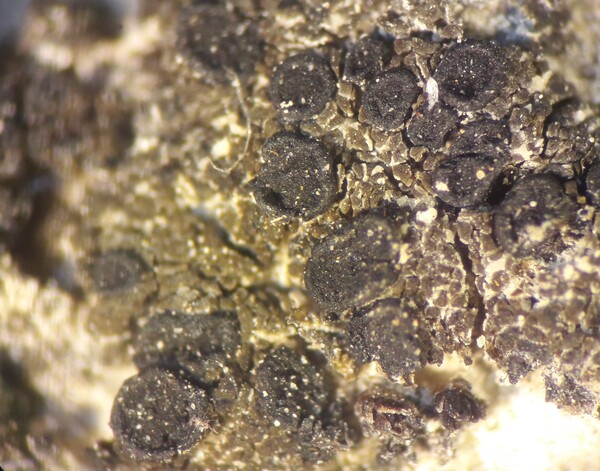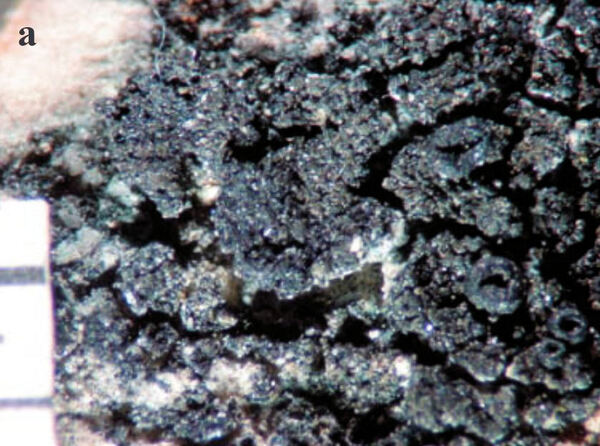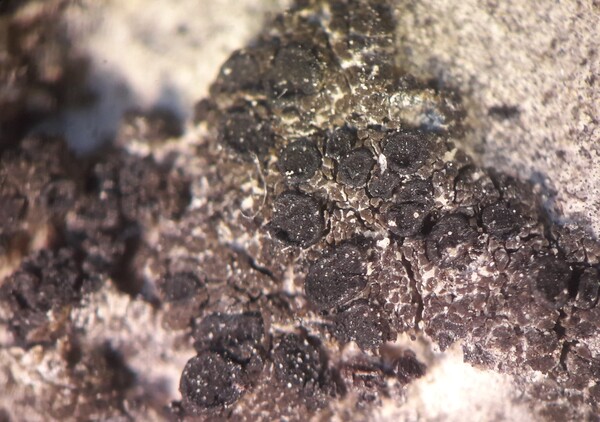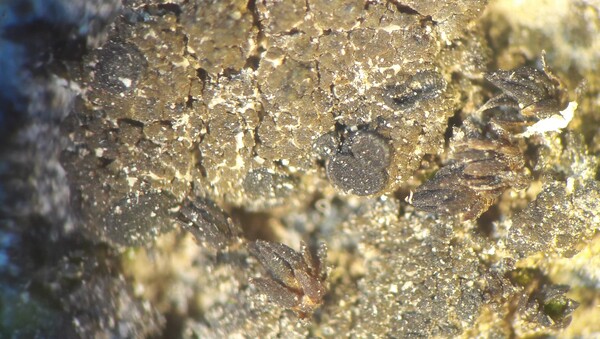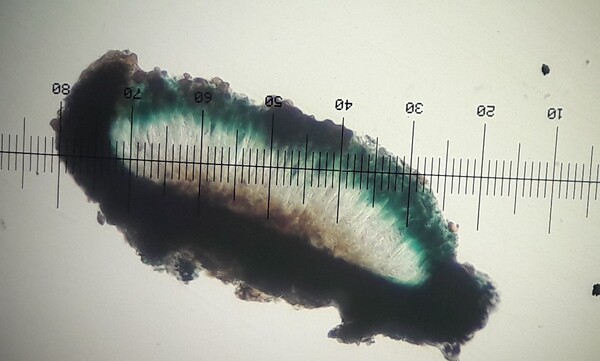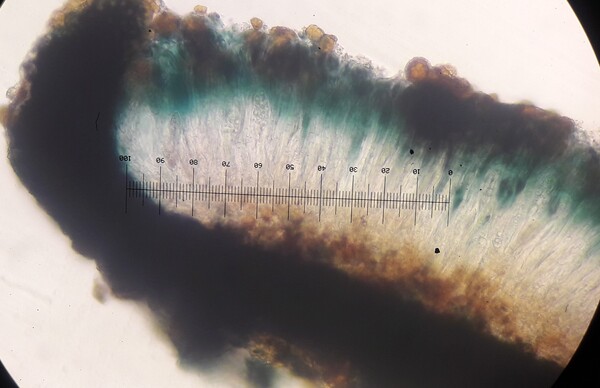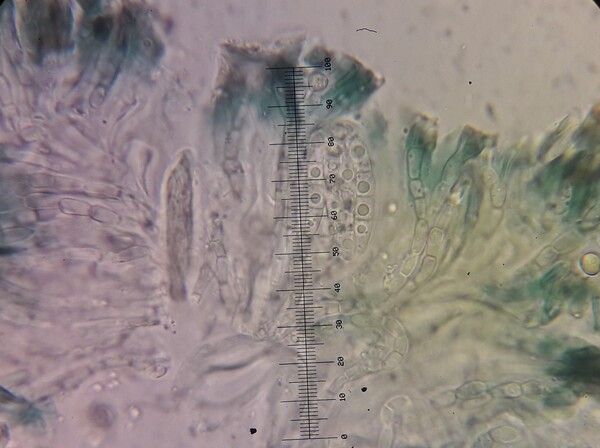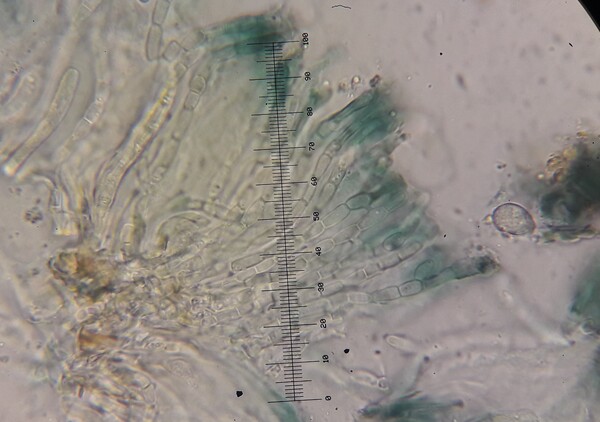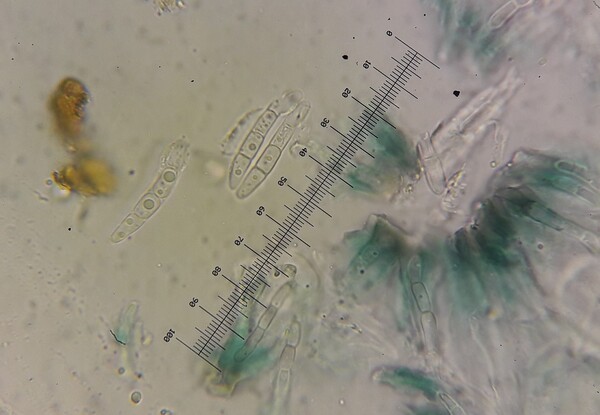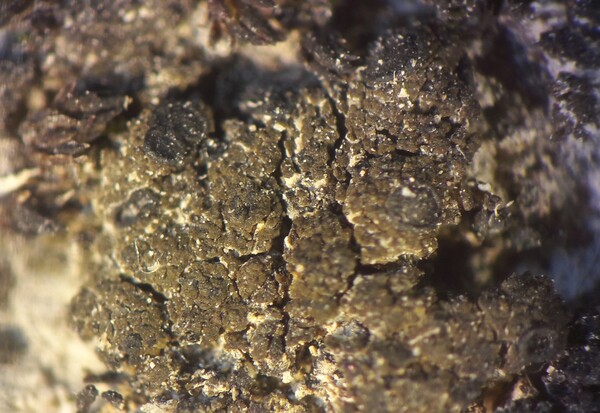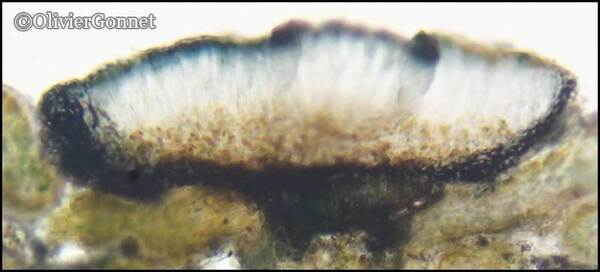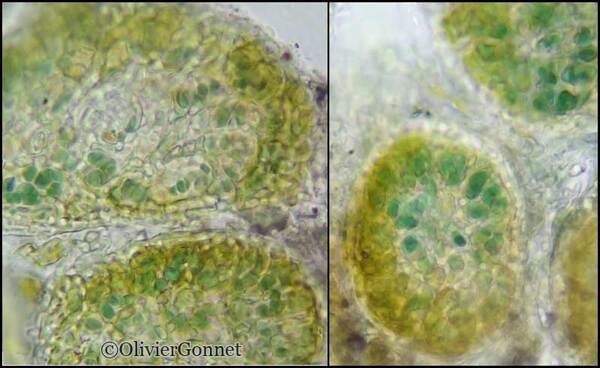Placynthium dolichoterum (Nyl.) Trevis.
Sched. ad Lich. Ven. Exs.: nr. 98, 1869. Basionym: Pannaria dolichotera Nyl. - Lichenes Scand.: 127, 1861.
Synonyms: Parmeliella melantera (Stirt.) A.L. Sm.; Placynthium pluriseptatum (Arnold) Arnold
Description: Thallus crustose, rimose-areolate, dark dark olive-green to almost black, somewhat shiny, 0.15-0.5(-1) mm thick, the areoles isodiametrical, mostly angular, 0.15-0.8 mm wide, covered in verrucose-papillate, isidioid outgrowths throughout, forming up to 3(-4) cm wide patches, usually without a distinct prothallusor with a poorly evident blue hypothallus visible between the areoles. Upper cortex indistinct, the thallus otherwise paraplectenchymatous throughout, without a distinct medulla; lower cortex dark, paraplectenchymatous, giving rise to dark rhizohyphae. Apothecia biatorine, black, up to 1(-1.5) mm across, with an initially concave, then flat to convex, smooth, shiny disc and a thin, finally often excluded, shiny proper margin. Proper exciple dark purplish brown, 65-70 µm wide; epithecium dark blue-green; hymenium colourless, 75-80(-110) high; paraphyses distinctly septate, sparingly branched; hypothecium pale brown. Asci 8-spored, apically thickened, with an amyloid cap. Ascospores 3-5-septate, hyaline, narrowly cylindrical to fusiform, (25-)27-40(-50) x (3-)4-6(-7) μm. Pycnidia 90-150 μm across, the wall blue at least in upper part. Conidia bacilliform, (4-)5-6 x c. 1 μm. Photobiont cyanobacterial, Scytonema-like. Spot tests: all negative. Chemistry: without lichen substances.
Growth form: Crustose
Substrata: rocks
Photobiont: cyanobacteria, filamentous (e.g. Nostoc, Scytonema)
Reproductive strategy: mainly asexual, by isidia, or isidia-like structures (e.g. schizidia)
Poorly known taxon in need of further study
Commonnes-rarity: (info)
Alpine belt: extremely rare
Subalpine belt: rare
Montane belt: extremely rare
Dry submediterranean belt: absent
Humid submediterranean belt: absent
Padanian area: absent
pH of the substrata:
1 2 3 4 5
Solar irradiation:
1 2 3 4 5
Aridity:
1 2 3 4 5
Eutrophication:
1 2 3 4 5
Poleotolerance:
0 1 2 3
Altitudinal distribution:
1 2 3 4 5 6
Rarity
absent
extremely rare
very rare
rare
rather rare
rather common
common
very common
extremely common
Loading data...
Occurrence data
Predictive map
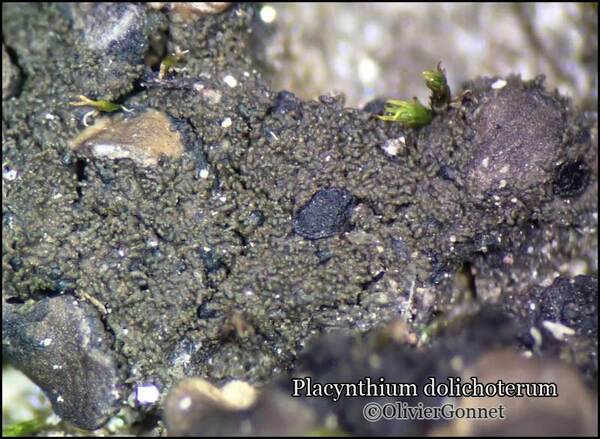
Courtesy Danièle et Olivier Gonnet - Source: https://www.afl-lichenologie.fr/Photos_AFL/Photos_AFL_P/Text_P_3/Placynthium_dolichoterum.htm
France, 2014 - Vanoise, Mont Cenis - Haute-Savoie
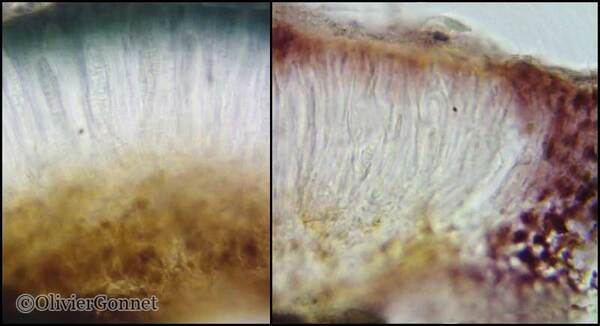
Courtesy Danièle et Olivier Gonnet - Source: https://www.afl-lichenologie.fr/Photos_AFL/Photos_AFL_P/Text_P_3/Placynthium_dolichoterum.htm
France, 2014 - Vanoise, Mont Cenis - Haute-Savoie
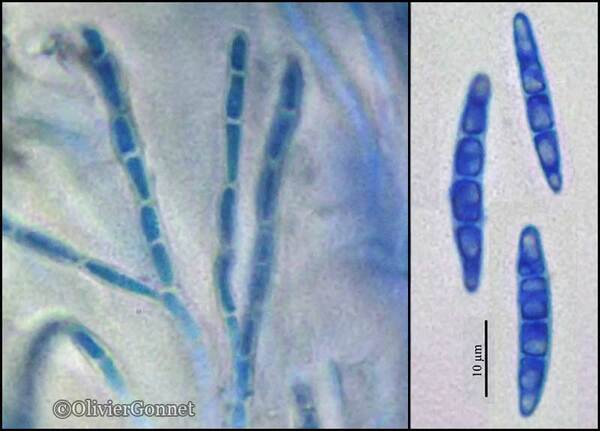
Courtesy Danièle et Olivier Gonnet - Source: https://www.afl-lichenologie.fr/Photos_AFL/Photos_AFL_P/Text_P_3/Placynthium_dolichoterum.htm
France, 2014 - Vanoise, Mont Cenis - Haute-Savoie
Growth form: Crustose
Substrata: rocks
Photobiont: cyanobacteria, filamentous (e.g. Nostoc, Scytonema)
Reproductive strategy: mainly asexual, by isidia, or isidia-like structures (e.g. schizidia)
Poorly known taxon in need of further study
Commonnes-rarity: (info)
Alpine belt: extremely rare
Subalpine belt: rare
Montane belt: extremely rare
Dry submediterranean belt: absent
Humid submediterranean belt: absent
Padanian area: absent
pH of the substrata:
| 1 | 2 | 3 | 4 | 5 |
Solar irradiation:
| 1 | 2 | 3 | 4 | 5 |
Aridity:
| 1 | 2 | 3 | 4 | 5 |
Eutrophication:
| 1 | 2 | 3 | 4 | 5 |
Poleotolerance:
| 0 | 1 | 2 | 3 |
Altitudinal distribution:
| 1 | 2 | 3 | 4 | 5 | 6 |
Rarity
absent
extremely rare
very rare
rare
rather rare
rather common
common
very common
extremely common
Loading data...
Occurrence data
Predictive map

Courtesy Danièle et Olivier Gonnet - Source: https://www.afl-lichenologie.fr/Photos_AFL/Photos_AFL_P/Text_P_3/Placynthium_dolichoterum.htm
France, 2014 - Vanoise, Mont Cenis - Haute-Savoie

Courtesy Danièle et Olivier Gonnet - Source: https://www.afl-lichenologie.fr/Photos_AFL/Photos_AFL_P/Text_P_3/Placynthium_dolichoterum.htm
France, 2014 - Vanoise, Mont Cenis - Haute-Savoie



